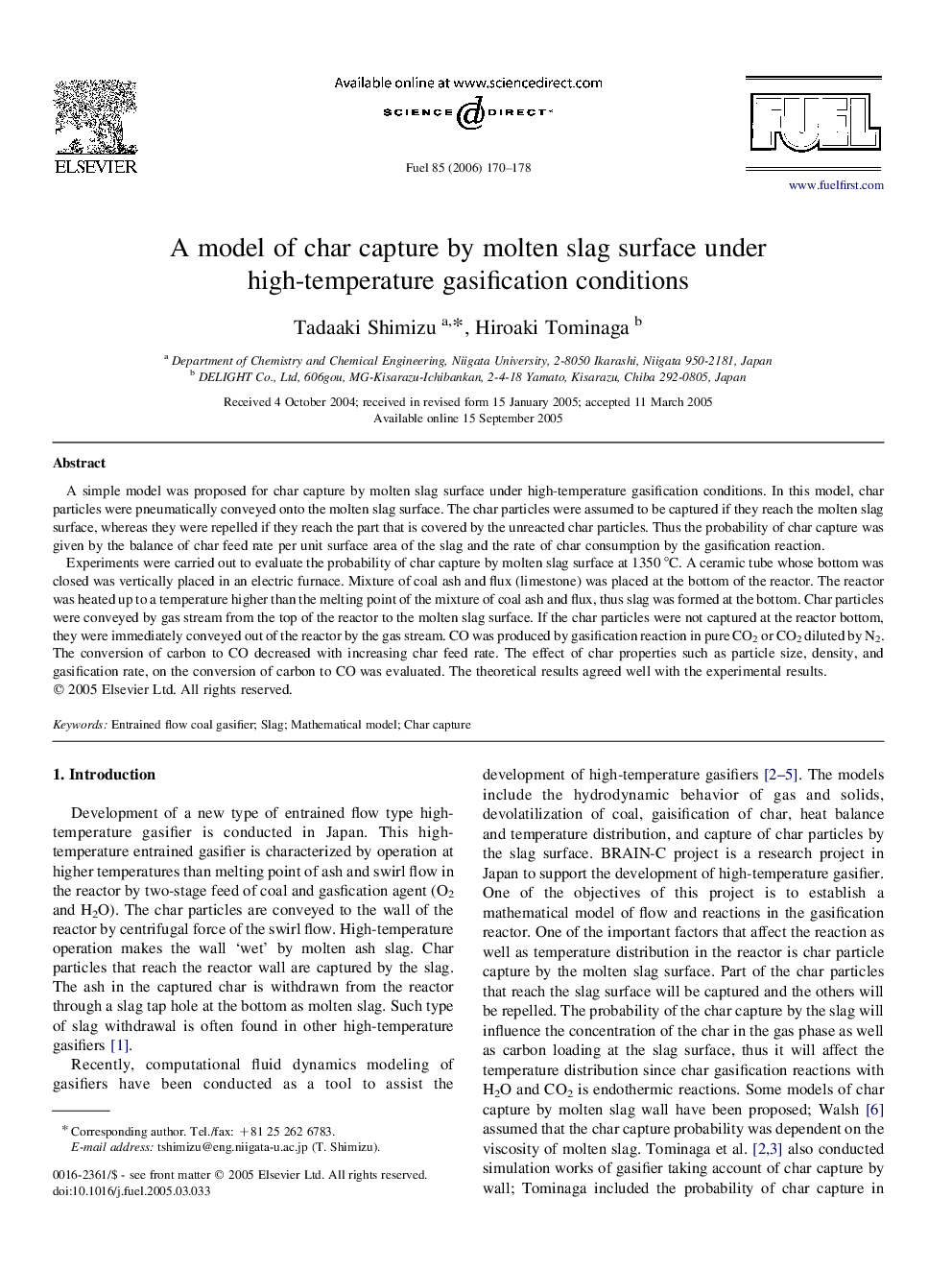| Article ID | Journal | Published Year | Pages | File Type |
|---|---|---|---|---|
| 208740 | Fuel | 2006 | 9 Pages |
A simple model was proposed for char capture by molten slag surface under high-temperature gasification conditions. In this model, char particles were pneumatically conveyed onto the molten slag surface. The char particles were assumed to be captured if they reach the molten slag surface, whereas they were repelled if they reach the part that is covered by the unreacted char particles. Thus the probability of char capture was given by the balance of char feed rate per unit surface area of the slag and the rate of char consumption by the gasification reaction.Experiments were carried out to evaluate the probability of char capture by molten slag surface at 1350 °C. A ceramic tube whose bottom was closed was vertically placed in an electric furnace. Mixture of coal ash and flux (limestone) was placed at the bottom of the reactor. The reactor was heated up to a temperature higher than the melting point of the mixture of coal ash and flux, thus slag was formed at the bottom. Char particles were conveyed by gas stream from the top of the reactor to the molten slag surface. If the char particles were not captured at the reactor bottom, they were immediately conveyed out of the reactor by the gas stream. CO was produced by gasification reaction in pure CO2 or CO2 diluted by N2. The conversion of carbon to CO decreased with increasing char feed rate. The effect of char properties such as particle size, density, and gasification rate, on the conversion of carbon to CO was evaluated. The theoretical results agreed well with the experimental results.
